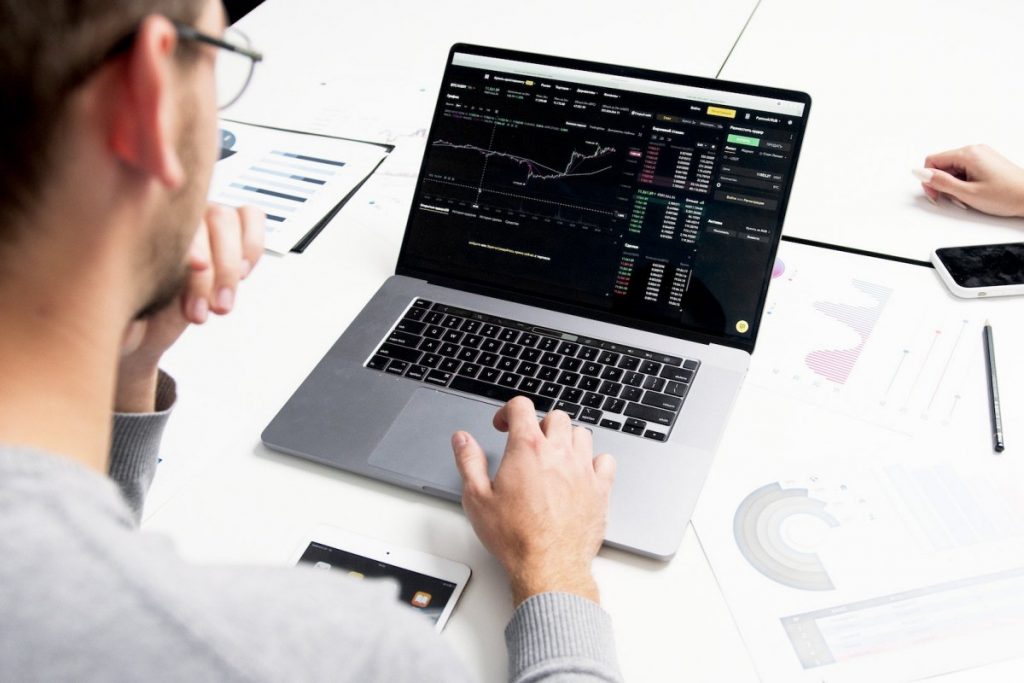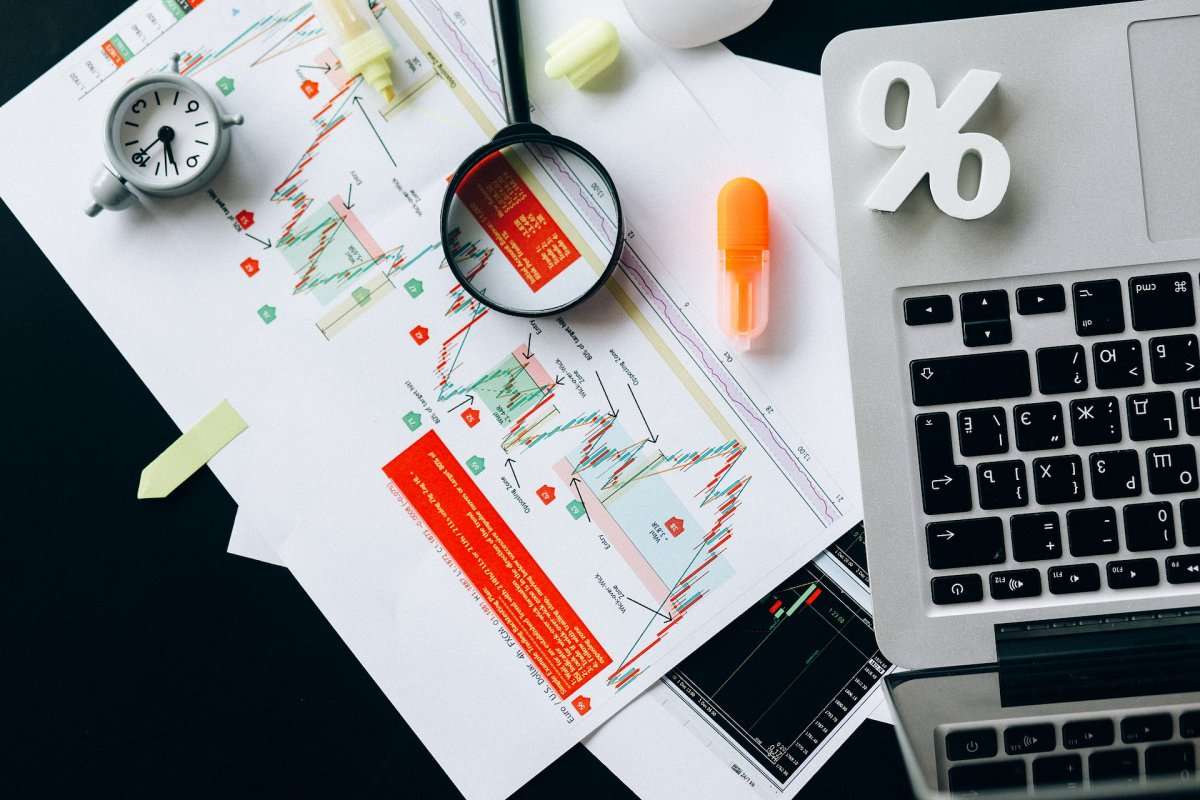Forex trading, often referred to as foreign exchange trading, is an exciting journey into the world of global currencies. If you’re new to this dynamic market, understanding forex trading basics is crucial. This comprehensive guide will walk you through the fundamental concepts, strategies, and tools you need to embark on your forex trading adventure with confidence.
Table of Contents
Introduction to Forex Trading Basics
At its core, forex trading basics involves the exchange of one currency for another. The forex market, known for its immense liquidity and accessibility, operates around the clock, making it an enticing arena for traders worldwide.

What is Forex Trading?
Forex trading is the act of buying and selling currencies with the aim of profiting from changes in their relative values. It’s the largest financial market globally, with a daily trading volume exceeding $6 trillion. The market is decentralized, meaning there’s no central exchange; instead, trading takes place electronically over-the-counter (OTC).
Forex trading is driven by supply and demand dynamics. When a currency’s demand increases, its value appreciates, and when demand decreases, its value depreciates. Traders can profit from both rising (going long) and falling (going short) markets.
Importance of Understanding Forex Trading Basics
Developing a solid grasp of forex trading basics is essential before delving into more complex strategies. It ensures you make informed decisions and have a clear understanding of the risks involved. Without a strong foundation, navigating the intricate world of forex can be overwhelming.
Understanding the basics helps you interpret market news, analyze economic indicators, and decipher trading signals. Moreover, it provides you with the confidence to explore various trading styles and strategies effectively.
Benefits for Beginners
Forex trading basics offers numerous benefits for beginners. It’s accessible, requiring only a computer and internet connection, and offers opportunities to profit in both rising and falling markets. Learning the basics empowers you to navigate this complex market confidently.
1. Potential Profits: The ability to profit from both rising and falling markets is a unique advantage of forex trading. In traditional markets, like stocks, you can only profit when the asset’s value rises.
2. Accessibility: The forex market operates 24 hours a day, five days a week, allowing traders from different time zones to participate at their convenience. This flexibility is especially appealing for those with busy schedules.
3. Liquidity: With a daily trading volume exceeding $6 trillion, the forex market is highly liquid. This means you can easily enter and exit positions without significant price fluctuations.
4. Leverage: Leverage allows you to control larger positions with a smaller amount of capital. While it amplifies potential profits, it also increases potential losses. It’s essential to use leverage wisely and manage your risk effectively.
5. Learning Opportunities: The forex market offers a wealth of educational resources, including webinars, online courses, and trading platforms with demo accounts. These resources help beginners build confidence and improve their trading skills.
6. Diverse Trading Styles: Whether you prefer day trading, swing trading, or position trading, the forex market accommodates various trading styles. As a beginner, you can explore different approaches to find what suits your personality and goals.
Understanding Currency Pairs

The foundation of forex trading lies in currency pairs. These pairs consist of a base currency and a quote currency, representing how much of the quote currency is needed to purchase one unit of the base currency. Major pairs like EUR/USD and USD/JPY dominate the market, while minor and exotic pairs offer intriguing alternatives.
Major Currency Pairs
Major pairs involve the world’s strongest economies and offer high liquidity and stability. For example, EUR/USD represents the Euro against the US Dollar and is the most traded currency pair.
EUR/USD (Euro/US Dollar): This pair is often referred to as “fiber” and is the most liquid currency pair. It represents the Eurozone’s single currency, the Euro, against the US Dollar, the world’s primary reserve currency.
USD/JPY (US Dollar/Japanese Yen): Known as the “ninja,” this pair represents the US Dollar against the Japanese Yen. It’s influenced by the monetary policies of the US Federal Reserve and the Bank of Japan.
GBP/USD (British Pound/US Dollar): Often called “cable,” this pair represents the British Pound against the US Dollar. It’s influenced by economic data from both the UK and the US.

Minor Currency Pairs
Minor pairs exclude the US Dollar but still offer liquidity and opportunities. Pairs like EUR/GBP and AUD/JPY represent strong European and Australian economies against other currencies.
EUR/GBP (Euro/British Pound): This pair compares the Euro against the British Pound. It’s affected by economic and political developments in both the Eurozone and the UK.
AUD/JPY (Australian Dollar/Japanese Yen): Representing the Australian Dollar against the Japanese Yen, this pair is influenced by Australia’s commodity exports and Japan’s monetary policy.
NZD/CAD (New Zealand Dollar/Canadian Dollar): This pair reflects the New Zealand Dollar against the Canadian Dollar. Both countries’ economic indicators impact this pair.
Exotic Currency Pairs
Exotic pairs involve one major currency and one from an emerging or smaller economy. Examples include USD/SGD (US Dollar/Singapore Dollar) and EUR/TRY (Euro/Turkish Lira). Exotic pairs tend to have wider spreads and less liquidity, making them riskier.
USD/SGD (US Dollar/Singapore Dollar): Reflecting the US Dollar against the Singapore Dollar, this pair is influenced by the economic performance of the US and Singapore, as well as geopolitical events in the Asia-Pacific region.
EUR/TRY (Euro/Turkish Lira): This pair combines the Euro and the Turkish Lira. It’s influenced by both Eurozone economic data and political developments in Turkey.
USD/ZAR (US Dollar/South African Rand): This pair compares the US Dollar to the South African Rand. Economic indicators, political stability, and commodity prices impact this pair.
Understanding different currency pairs helps you choose those that align with your trading strategy and risk tolerance. It’s essential to keep track of major economic events and news that could influence the currencies in your chosen pairs.
Exchange Rates and Pip Movement

Exchange rates are the heartbeat of forex trading basics, representing the value of one currency in relation to another. The smallest price movement in forex is measured in pips, a standard unit for calculating changes in exchange rates. Understanding pip movement is essential for gauging potential profits and losses accurately.
How Exchange Rates Work
Exchange rates are influenced by various factors, including economic indicators (GDP, unemployment, inflation), interest rates, geopolitical events, and market sentiment. For instance, a country with a strong economy and stable political landscape often has a stronger currency.
Economic Indicators: Indicators like Gross Domestic Product (GDP), consumer price index (CPI), and employment reports can influence a country’s currency value. Positive economic data may strengthen a currency, while negative data can weaken it.
Interest Rates: Central banks set interest rates, which impact borrowing costs and overall economic activity. Higher interest rates can attract foreign investment and strengthen a currency.
Geopolitical Events: Political stability, trade agreements, and international conflicts can affect currency values. For example, uncertainty due to political unrest can weaken a country’s currency.
Calculating Pip Value
Pip value varies based on trade size and the currency pair being traded. To calculate pip value, divide one pip (usually 0.0001 or 0.01, depending on the currency) by the exchange rate and multiply by the trade size.
Example: Let’s say you’re trading EUR/USD, and the exchange rate is 1.2000. If you’re trading one standard lot (100,000 units), the pip value can be calculated as follows:
Pip Value = (0.0001 / 1.2000) * 100,000 = $8.33
Understanding pip values is crucial for risk management. By knowing the value of each pip, you can set appropriate stop-loss and take-profit levels to control your potential losses and gains.
Significance of Pip Movement
Pip movement is a key indicator of a currency pair’s volatility. Larger pip movements can result in more significant profits or losses. Understanding pip values helps you manage your trades and assess potential risks more accurately.
Volatility and Pip Movement: Highly volatile currency pairs can experience larger price swings, leading to more significant pip movements. Less volatile pairs tend to have smaller pip movements.
Impact on Position Sizing: The size of your position (lot size) and the pip value influence the potential gains or losses in a trade. Larger lot sizes combined with substantial pip movements can lead to substantial profits or losses.
As a beginner, it’s advisable to start with smaller position sizes to manage your risk effectively. Gradually increase your position size as you gain experience and confidence in your trading abilities.
Market Participants and Roles

A multitude of players participate in the forex market, each with distinct roles. Central banks wield significant influence through monetary policy decisions, financial institutions execute large transactions, and retail traders like you contribute to market dynamics.
Central Banks and Governments
Central banks play a pivotal role in the forex market by setting interest rates and implementing monetary policies that influence currency values. For example, when a central bank raises interest rates, the country’s currency may strengthen due to higher returns for investors.
Monetary Policy: Central banks use monetary policy tools like interest rate adjustments and quantitative easing to control inflation, stimulate economic growth, and stabilize currency values.
Intervention: In extreme cases, central banks may intervene in the forex market to influence their currency’s value. This can involve buying or selling their own currency to impact supply and demand dynamics.
Impact on Forex: Central bank decisions and statements can create significant volatility in the forex market. Traders closely monitor central bank meetings and announcements to gauge potential market moves.
Financial Institutions
Financial institutions, including commercial banks, hedge funds, and pension funds, are major players in the forex market. They engage in large-scale trading to manage risks, invest funds, and profit from currency fluctuations.
Interbank Market: Much of the forex trading occurs in the interbank market, where financial institutions trade directly with each other. Interbank trading influences currency prices and liquidity.
Risk Management: Financial institutions use forex trading to hedge against currency risk. For example, a multinational company may use forex contracts to mitigate the impact of currency fluctuations on international sales.
Speculation: Hedge funds and speculative traders aim to profit from short-term price movements. Their high trading volumes can contribute to market volatility.
Retail Traders
Retail traders, also known as individual traders or speculators, form a significant portion of the forex market. Thanks to online trading platforms, individuals can access the market and trade currencies from the comfort of their homes.
Advantages of Retail Trading: Retail traders benefit from accessible trading platforms, real-time market data, and educational resources. This allows individuals with varying levels of experience to participate in forex trading.
Trading Styles: Retail traders can adopt different trading styles, such as day trading, swing trading, and long-term investing. Each style caters to different risk tolerances and time commitments.
Market Access: Retail traders can access a wide range of currency pairs, allowing them to capitalize on various market opportunities. However, it’s essential to select pairs that align with your trading strategy and risk tolerance.
Brokerage Firms
Brokerage firms act as intermediaries between retail traders and the interbank market. They provide trading platforms, execute trades, and offer services like leverage, account management, and customer support.
Market Access: Brokerage firms offer retail traders access to the forex market, allowing them to execute trades and manage their accounts.
Leverage: Many brokers offer leverage, allowing traders to control larger positions with a smaller amount of capital. While leverage can amplify profits, it also increases the potential for losses.
Regulation: Choosing a regulated broker is essential to ensure a secure and fair trading environment. Regulated brokers adhere to specific standards and provide transparency.
Understanding the roles of different market participants helps you grasp the dynamics that drive forex price movements. Central bank decisions, financial institution activities, and retail trader behavior collectively shape the market’s volatility and trends.
The Basics of Forex Analysis

Forex analysis involves evaluating various factors to predict currency price movements. There are two primary methods of analysis: fundamental and technical. Each approach provides unique insights into market trends and potential trading opportunities.
Fundamental Analysis
Fundamental analysis involves assessing economic indicators, news events, and geopolitical developments that impact currency values. Traders who use fundamental analysis examine a country’s economic health to predict its currency’s future strength or weakness.
Economic Indicators: Economic indicators, such as GDP, unemployment rates, inflation rates, and trade balances, provide insights into a country’s economic performance. Positive indicators can strengthen a currency, while negative indicators can weaken it.
News Events: News releases, such as central bank announcements, employment reports, and geopolitical news, can trigger significant market movements. Traders monitor these events to identify potential trading opportunities.
Long-Term Trends: Fundamental analysis can help identify long-term trends based on a country’s overall economic health. Traders analyze factors like fiscal policies, political stability, and global economic relationships.
Technical Analysis
Technical analysis involves studying historical price data and chart patterns to predict future price movements. Traders who use technical analysis focus on patterns, trends, and indicators to make trading decisions.
Price Charts: Technical analysis begins with studying price charts. Common types of charts include line charts, bar charts, and candlestick charts. These charts visualize price movements over time.
Chart Patterns: Chart patterns, such as head and shoulders, double tops, and flags, provide insights into potential price reversals or continuations. These patterns help traders anticipate future market movements.
Indicators: Technical indicators, such as moving averages, Relative Strength Index (RSI), and MACD, provide mathematical calculations based on historical price data. These indicators help traders identify overbought or oversold conditions and potential trend changes.
Combining Fundamental and Technical Analysis
Successful traders often combine both fundamental and technical analysis to make well-informed decisions. While fundamental analysis provides a broader understanding of market drivers, technical analysis helps pinpoint entry and exit points.
Example: Suppose fundamental analysis indicates that a country’s economic indicators are improving, suggesting a strengthening currency. Technical analysis can then be used to identify optimal entry points based on price patterns or indicators.
The Role of Brokers in Forex Trading Basics

Choosing the right forex broker is crucial for your trading journey. Brokers provide the trading platform, execute trades, and offer various services that impact your trading experience.
Evaluating Broker Factors
When selecting a broker, consider the following factors to ensure a positive trading experience:
Regulation: Opt for brokers regulated by reputable financial authorities such as the Financial Conduct Authority (FCA), the US Commodity Futures Trading Commission (CFTC), or the Australian Securities and Investments Commission (ASIC). Regulation provides a level of security and ensures fair practices.
Spreads and Fees: Spreads are the difference between the buying and selling prices of a currency pair. Choose a broker with competitive spreads, as lower spreads can lead to reduced trading costs. Additionally, be aware of any hidden fees or commissions.
Trading Platforms: A user-friendly and feature-rich trading platform is essential for effective trading. Popular platforms include MetaTrader 4 (MT4) and MetaTrader 5 (MT5). Check if the broker offers a demo account to practice using the platform.
Customer Support: Responsive and efficient customer support is crucial, especially for resolving technical issues or account inquiries. Test the broker’s customer support before committing by reaching out with questions.
Account Types: Brokers offer various account types tailored to different trader preferences. These may include standard accounts, mini accounts, and micro accounts. Choose an account that aligns with your trading style and capital.
Account Types and Leverage
Different account types cater to traders with varying levels of experience and capital. Here are common account types and their characteristics:
Standard Accounts: Standard accounts are suitable for experienced traders with larger capital. They typically offer more features and services, such as lower spreads and access to research tools.
Mini and Micro Accounts: Mini and micro accounts are ideal for beginners or traders with smaller capital. These accounts allow you to trade smaller positions with lower risk. They also serve as excellent platforms for practicing trading strategies.
Leverage: Leverage is the ability to control a larger position with a smaller amount of capital. While leverage can amplify profits, it also magnifies potential losses. Understand the risks of leverage and use it prudently.
Importance of Regulation
Trading with a regulated broker ensures a level of transparency and security. Regulated brokers adhere to strict financial standards, segregate client funds from their operational funds, and follow ethical practices.
Client Fund Protection: Regulated brokers keep client funds in segregated accounts, separate from their operational funds. This protects your funds in case the broker faces financial difficulties.
Transparent Practices: Regulated brokers are required to provide transparent information about their services, spreads, fees, and trading conditions. This transparency helps you make informed decisions.
Dispute Resolution: Regulated brokers have mechanisms in place to address client complaints and disputes. This adds an extra layer of security in case you encounter issues with the broker.
Setting Up Your Trading Platform

Once you’ve selected a broker, setting up your trading platform is the next step. Your trading platform serves as your gateway to the forex market, allowing you to execute trades, analyze charts, and manage your positions effectively.
Navigating the Trading Platform
Familiarize yourself with the layout and features of your chosen trading platform. Explore different sections, including:
Price Charts: Price charts provide visual representations of currency pair movements over time. You can customize charts by selecting different timeframes and adding technical indicators.
Technical Indicators: Technical indicators are mathematical calculations applied to price data. They help identify trends, reversals, and potential entry or exit points.
Trade Execution: The trade execution interface allows you to place market orders, limit orders, and stop orders. It’s essential to understand how to enter and exit trades using these options.
Account Information: Access your account information, including your trading balance, equity, margin, and open positions. This information is crucial for managing risk and making informed trading decisions.
Placing Trades and Orders
Mastering the art of placing trades and orders is fundamental to successful trading. Different types of orders allow you to control your trades and manage your risk effectively.
Market Orders: A market order is executed at the current market price. It’s suitable when you want to enter a trade immediately, regardless of the price.
Limit Orders: A limit order is set at a specific price level different from the current market price. It’s used when you want to enter a trade at a more favorable price than the current one.
Stop Orders: A stop order is triggered when the market reaches a certain price level. It’s used to limit potential losses or enter a trade once the price moves in a certain direction.
Risk Management and Trading Psychology
Before you start trading, develop a risk management strategy and understand the psychology of trading. Risk management involves setting stop-loss and take-profit levels to protect your capital. Trading psychology pertains to the emotional aspects of trading, such as fear, greed, and discipline.
Risk-to-Reward Ratio: Determine a risk-to-reward ratio for each trade. This ratio assesses the potential reward against the potential risk. A common rule is to aim for a ratio of at least 1:2, meaning your potential reward is twice your potential risk.
Position Sizing: Determine the size of your position based on your risk tolerance and the distance to your stop-loss level. Position sizing ensures you don’t risk more than a predetermined percentage of your trading capital on a single trade.
Emotional Discipline: Maintain emotional discipline by following your trading plan and avoiding impulsive decisions based on emotions. Trading psychology plays a significant role in your overall success as a trader.
Conclusion: Your Journey in Forex Trading Basics

Embarking on your forex trading journey requires continuous learning, practice, and a commitment to improving your skills. This guide has provided you with a solid foundation in forex trading basics, including understanding the forex market, analyzing currency pairs, evaluating market participants, and setting up your trading platform.
As you progress, remember that forex trading is a journey, not a destination. Keep refining your strategies, learning from both successes and setbacks, and staying informed about market developments. By mastering the basics and honing your skills, you can navigate the world of forex trading with confidence and strive for long-term success.
Resources for Further Learning
To deepen your understanding of forex trading, explore the following resources:
- Books: There are many excellent books on forex trading, technical analysis, and trading psychology. Look for titles authored by reputable traders and educators.
- Online Courses: Enroll in online courses offered by experienced traders or educational platforms. These courses cover various aspects of forex trading and can help you develop specialized skills.
- Trading Communities: Join online trading communities, forums, and social media groups. Engaging with fellow traders allows you to exchange ideas, share experiences, and learn from one another.
- Demo Accounts: Most brokers offer demo accounts, allowing you to practice trading with virtual funds. Demo accounts are an invaluable tool for honing your skills and testing new strategies without risking real money.
Remember that becoming a successful forex trader takes time, dedication, and continuous effort. Stay patient, stay informed, and remain committed to your journey in the dynamic world of forex trading.


